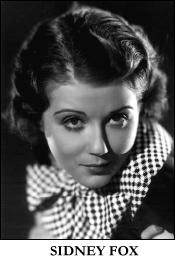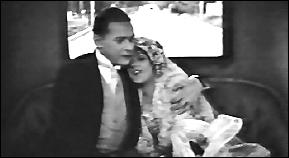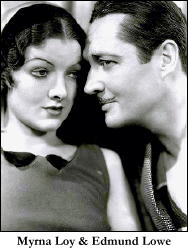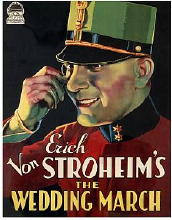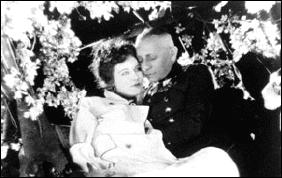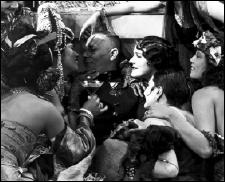Several Takes on Othello
by DAN STUMPF:
Got a wild hair up my brain last month and started watching Othello: the 1965 film-of-the-play with Laurence Olivier, and the 1953 version done by Orson Welles, and now some *** SPOILER COMMENTS ***
I’m going to talk about the ending here because I assume most folks are familiar with it, or if you’re not, the full title, “The Tragedy of Othello” might tip you off.

Olivier’s film is entirely too slow and stagy, especially the acting, which is rather too broad for a movie. The actors never seem to sit down and relax; they’re always standing (or posing, rather) to declaim their lines. Maggie Smith, Derek Jacobi and Frank Finlay (who plays Iago like a mean-spirited Peter Cook) inject some naturalism, but they’re woefully overridden by Laurence Olivier, grimacing gesticulating, eye-rolling, and yet somehow compelling as ever.
Then the 1949/53 Welles film: Visually splendid, and for a bespoke egotist, Welles is very generous to his supporting players, but the film itself has the kind of dubbing one normally associates with Japanese rubber-suit-monster-movies, so given the tricky mise-en-scene and the floating sound track, it’s sometimes hard to figure out who’s saying what. Surprisingly, in the whole cast, Robert Coote stands out as a deftly comic Roderigo, cast effectively against Micheal MacLiammoir, who plays Iago like a petulant Dudley Moore.

MacLiammoir wrote a book about the chaotic production of this film, which took about a year-and-a-half to make and another year-and-a-half to get released. Put Money in Thy Purse (Methuen, 1952) is required reading for fans of Shakespeare and Welles, and a treat for those who just love good writing.
MacLiammoir masters that subtle, self-deprecating humor one finds in the best of Walter Albert, and his evocations of the film’s exotic locations (Rome, Venice, Casablanca, Morocco…) are vivid and hilarious at the same time.
He also has a clever way with his anecdotes, setting up a situation, milking it for potential, then delivering the punch line like a witty prize-fighter. There’s an exceptional scene of a drunken actor with a thick Dutch accent auditioning for Roderigo, who keeps getting drunker, more energetic and less comprehensible as the audition goes on for hours, at the end of which, Welles turns to MacLiammoir and says, “We may have been in the presence of genius. However, I think what the part calls for is talent.”
The most effective film of the story, however, may be Franco Zeffirelli’s 1986 Otello, from Verdi’s opera, with great sets, costumes, and color, plus fast pace and snappy performances. The music ain’t bad either.

Verdi gives a fine duet to Otello and Desdemona (which is more than Shakespeare did) and Zeffirelli caps off the ending with cathartic energy — which, I’m afraid, is also more than Shakespeare did; the Immortal Bard had a tendency sometimes let his plays keep going when the story was over. (And I wonder: did savvy Elizabethans slip out of the Globe right after Hamlet died or Juliet croaked, to avoid the rush in the parking lot?)
If I mentioned Peter Cook and Dudley Moore earlier, it’s because Othello is largely an extended double-talk routine between Othello and Iago, gullible stooge and fast-talking con man: like a Hope-and-Crosby “Road to…” movie gone tragically wrong without the comic timing, or Oklahoma! if Poor Judd had actually hanged himself in the first act.
The story ends with Iago found out but basically triumphant, and Othello, who would have been a more compelling character if he had any brains, little more than his patsy. Some fine writing, but the story is weak at its core and ultimately unsatisfying.
And if I can throw in just one more aside, my favorite Othello isn’t a film at all, but a radio production with John Gielgud and Ralph Richardson as Othello and Iago, and Judy Dench as Desdemona.
Brutally edited but fast-moving, it gives the listener no time to get bored, and those who only know Gielgud from his “old prig” roles in the movies will find his Moor simply astonishing: he sounds fierce, black and seven feet tall, and he and Richardson play off each other like … well, like a well-practiced comedy team.




